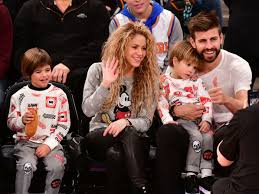A World Where Gender Equality is a Reality: What Would It Look Like
Imagine a world where gender equality is no longer an aspiration but a lived reality. In this world, men, women, and people of all gender identities enjoy the same rights, opportunities, and respect. The concept of gender no longer dictates a person’s worth or potential, and societies are structured in ways that promote fairness, justice, and inclusivity for everyone. This vision of true gender equality transforms every aspect of life—from personal relationships and workplaces to governments and education systems. Here’s what such a world would look like.
Equal Opportunities and Representation
In a gender-equal world, individuals of all genders would have the same access to opportunities across all fields. In workplaces, there would be an even distribution of men and women in leadership roles. Gender would not influence who is hired, promoted, or paid. For instance, female CEOs and male caregivers would be just as common as their traditional counterparts. All genders would have the freedom to pursue careers in science, technology, the arts, or any field of their choice without stereotypes dictating who “belongs” where.
Political representation would also reflect the diversity of society. Women, men, and non-binary individuals would hold office in equal measure, and policies would be crafted to address the needs and rights of all people. Gender equality in governance would result in more inclusive laws, addressing long-standing issues like pay gaps, reproductive rights, and parental leave, and ensuring that everyone is protected and empowered.
Shared Responsibilities in the Home
In a world where gender equality is the norm, traditional gender roles in families would dissolve. Domestic tasks like cooking, cleaning, and childcare would be equally shared between all partners, irrespective of gender. Men would be just as likely as women to take parental leave or be stay-at-home parents. Women, in turn, would not face societal pressure to prioritize family over career. These balanced dynamics would ensure that the burdens and joys of home life are shared equally, fostering stronger partnerships and a healthier work-life balance for everyone.
Freedom from Gender Stereotypes
One of the most significant transformations in a gender-equal world would be the disappearance of harmful gender stereotypes. Boys and girls would grow up free from the expectation that they must conform to rigid norms. Boys wouldn’t feel the pressure to suppress emotions or be overly aggressive, and girls wouldn’t be steered away from ambitious career paths or technical fields.
People of all genders would be free to express themselves in the way that feels most authentic, whether through their style, interests, or behavior. Society would celebrate diversity in personality, interests, and expression without the lens of gendered expectations. This would lead to a profound cultural shift, where everyone feels valued for who they are, not for how well they fit into a prescribed role.
Educational Equality and Empowerment
In this world, education would be a powerful tool for equality. Schools would foster environments that encourage both boys and girls to explore all subjects without bias. Girls would be just as likely to study STEM subjects (Science, Technology, Engineering, and Mathematics), and boys would be encouraged to engage in creative arts or care-related fields. Sexual education would be inclusive and comprehensive, helping students understand gender diversity, respect for others, and healthy relationships.
Moreover, policies would ensure that girls around the world, especially in places where education for women is limited, have access to quality education. There would be no barriers to education based on gender, ensuring that every child has the chance to reach their full potential.
A Culture of Respect and Safety
A gender-equal world would prioritize the safety and dignity of all individuals. Sexual harassment and gender-based violence would be rare, as society would have evolved to respect bodily autonomy and consent. There would be no tolerance for any form of discrimination or abuse based on gender. Legal systems would be swift and just in dealing with cases of violence, and support services for survivors would be accessible and comprehensive.
In personal relationships, gender equality would translate into mutual respect and understanding. Both men and women would be equally responsible for emotional labor, and relationships would be built on shared values of respect, communication, and partnership.
Global Benefits of Gender Equality
The ripple effects of gender equality would benefit all of humanity. When people of all genders have the opportunity to contribute to society in equal measure, it leads to a richer, more diverse range of ideas and innovations. Economic growth would surge as more women enter the workforce and pursue leadership roles. Poverty rates would drop, particularly in developing nations, where gender inequality often intersects with economic hardship.
Socially, gender equality would promote a more compassionate and collaborative world. Relationships between men and women, and across all gender identities, would be healthier, more equitable, and fulfilling. The shared responsibility and respect for one another would extend beyond the individual to create stronger, more resilient communities.
Conclusion
A world where gender equality is a reality would be one of opportunity, respect, and fairness. People would be free to live authentically, unburdened by outdated stereotypes or systemic barriers. By fostering inclusivity in all areas—politics, work, education, and relationships—society would thrive, and individuals would be empowered to pursue their dreams. This vision of equality is not just a utopian dream but an achievable goal, one that requires collective effort, social reform, and the dismantling of deeply entrenched systems of inequality. With commitment and action, such a world could one day become our reality.









